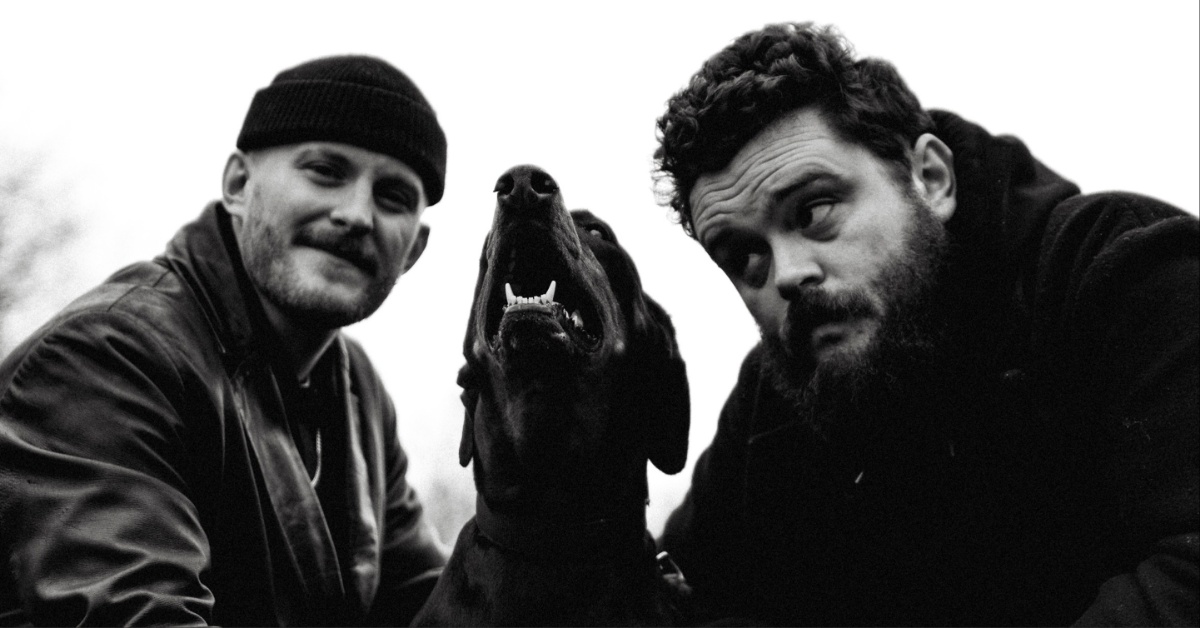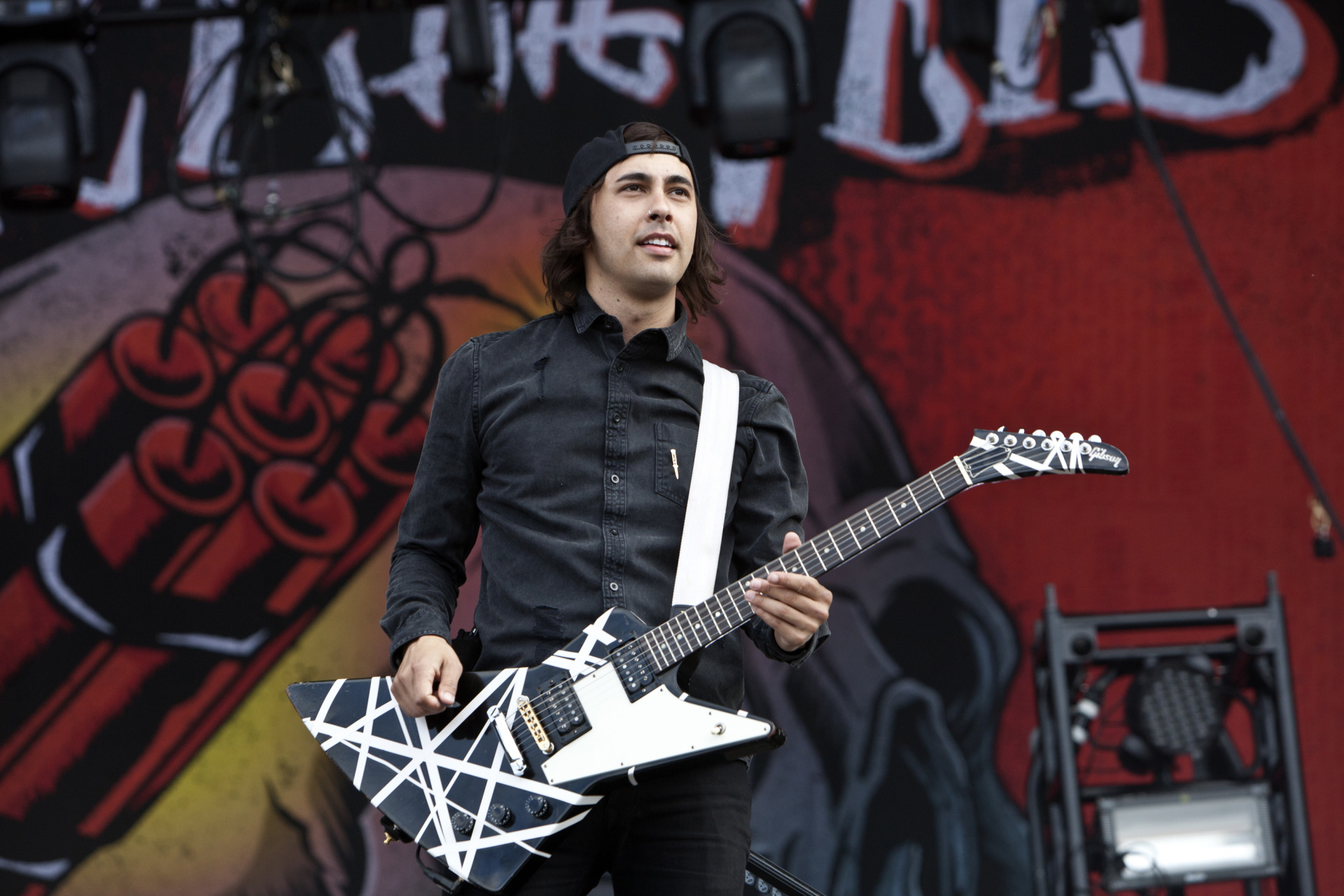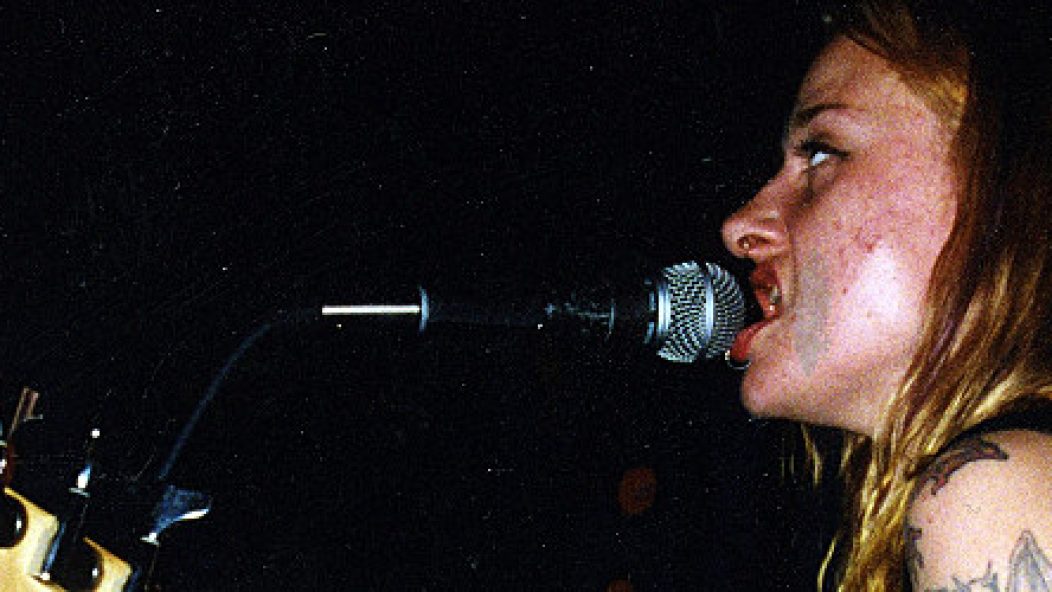
A History of Women in the Bay Area Metal Scene Part 1

…
This will be the first of a two-part article chronicling the history of women musicians in Northern California’s historically creative Bay Area metal scene.
…
“I think there’s always been women involved in the underground here in the Bay Area. The women here weren’t just the girlfriends. They were there to see bands and then later on, to play. They’d party and drink, not hold the boyfriend’s coat in the back of the room. They were there to have a good time. That’s when bands start forming, when people are hanging out and having a good time. ‘Oh you like that band? I like that band too! Wanna do this? Let’s do this.’ San Francisco is empowering. If you’re passionate about something, you’re going to find other people that are passionate about it too, whether you’re a man, woman or something in between.”
…
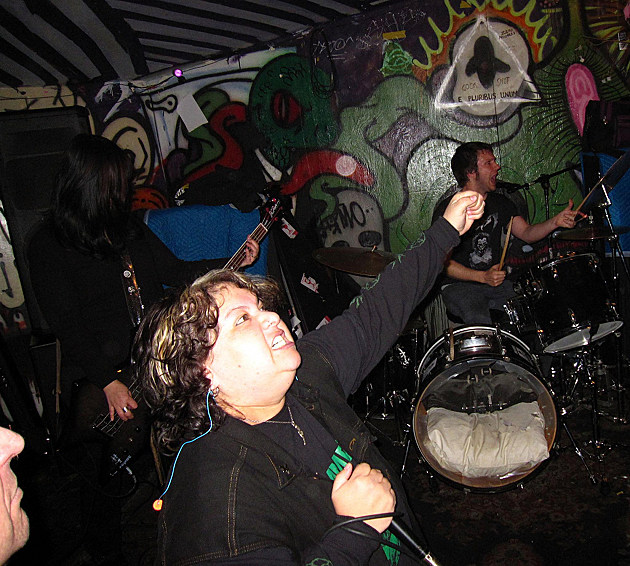
…
That’s the belief that Ami Lawless carries in 2014. As a San Francisco resident since 1968, she’s just about seen it all. As the lead vocalist of Voetsek, a radio DJ, the head of Selfish Satan Recordings and a strong supporter of DIY culture since the mid-’80s, she witnessed the local evolution of underground music since rock’s earliest days. For decades, Lawless has seen the Bay Area grow into a special place for female musicians wanting to play heavy metal, a genre traditionally known as a boys’ club.
The emergence of women in the bay’s creative community has roots in a time before heavy metal even existed. “If you go back even before The Summer of Love, there were the speakeasies and stuff. My parents used to go these illegal clubs in North Beach, and they’d always have female entertainers, drag entertainers too,” Lawless explains. “There’s always been females involved, maybe to a lesser degree sometimes over the years. I think that’s the vibe of San Francisco, the independence in people. It’s almost a mentality of, ‘I can do whatever the fuck I want and I’m gonna fuckin’ do it.’”
1967
…
In San Francisco, gender has been a hot-button topic for decades. For LGBT individuals, the city’s Castro district has been a haven since the early ‘70s and counter-culture throughout the area has been strong since the ‘60s. San Francisco’s anti-authority values and its social liberalism facilitated an environment where antiquated gender roles could potentially erode. Artists like Janis Joplin proudly tore down conventional gender roles that had plagued popular music since its inception. Sex, drugs and rock n’ roll was as reasonable a lifestyle as any as far as Joplin was concerned.
1977
…
Within the realm of rough-hewn music, punk was the first style to champion an apathetic view toward gender. The Avengers, The Nuns and The Mutants featured women taking on various musical roles and making an early influence on the Bay Area’s subversive music scene. The first wave for punk all across America was a short one, lasting only a couple years at the most. Hardcore punk followed shortly after, and its socially liberal ideologies provided a setting where gender could be ignored.
1986
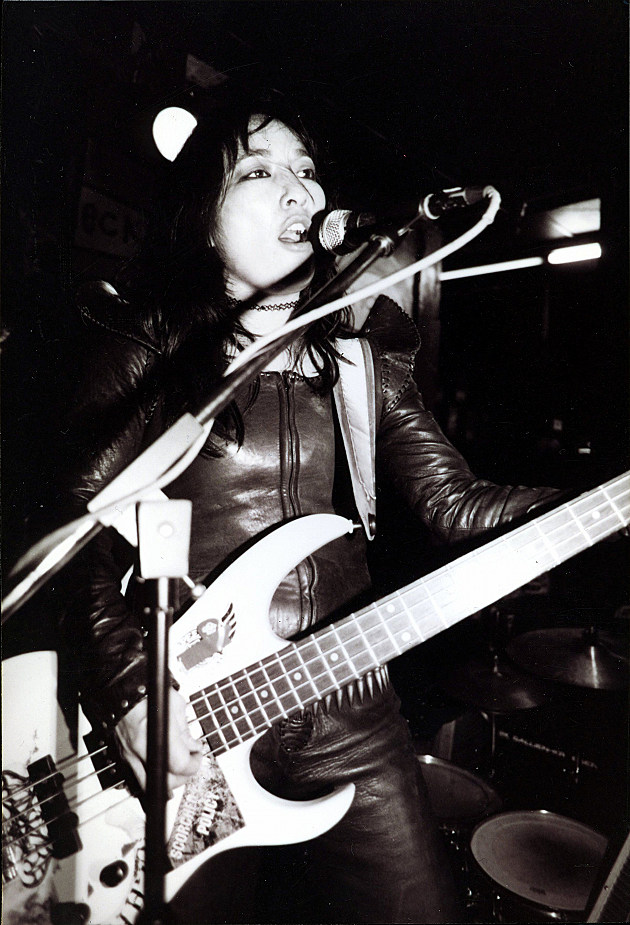
…
Janis Tanaka’s history in the bay spans just over 30 years. Her operatic and impassioned singing with Unholy Cadaver, later known as Hammers of Misfortune, earned praise throughout the still-growing metal scene. Nearly 20 years before The Bastard, Hammers’ debut record, Tanaka was just another fan, a metalhead, punk rocker and a general lover of music. “In the ’80s there was the hardcore punk scene and the metal scene, they were different. The basic differences between hardcore and thrash metal were the lyrics and thrash had solos while hardcore didn’t,” Tanaka explains. “When it came to the scene, the other difference was that at a hardcore show, there were both men and women. They were dressed kind of the same, everyone went in the pit, everyone did whatever. Whereas in the metal scene, if you went to Ruthie’s Inn, there would always be that one chick that was dressed like the guys and would be in the pit. The other gals would be like dolled up with heels and bobby earrings and stuff.”
Though underground shows was a constant in the bay, the hardcore kids established a local landmark that prided itself in its social practices. 924 Gilman Street in Berkeley has hosted hundreds of shows since Ami Lawless helped build its stage in 1986 and to this day, “No Sexism Or Misogyny. No Homophobia. No Transphobia,” are openly displayed as venue tenets.
1995
…
Bay Area hardcore’s apathy for gender constraints continued into the ’90s in the Mission district of San Francisco. Lost Goat, a quirky stoner rock trio made up of two women and one man, found a welcome home in the Mission. “As a female, I think you have to work harder for respect period in the straight world of normal people. The Mission scene was neither straight nor normal, so [gender] wasn’t a big issue,” says Lost Goat’s former bassist and vocalist, Erica Stoltz. “We didn’t want to sound like anyone else, and Tina [Gordon, former Lost Goat drummer] and I were still new to our instruments and willing to experiment. I think that made us interesting and most folks on the scene had a pretty wide range of musical tastes.”
Though the little Mission scene was an accepting community of oddball fans and performers, the bands were still playing music outside the mainstream realm. The Bay Area as a whole was still an unwelcome place for heavy music that didn’t involve turntables and slap-bass.
Lori Joseph of Acid King summoned righteous riffing thunder in San Francisco at a time when Black Sabbath were collaborating with Ice-T, while Noothgrush’s Chiyo Nukaga crushed San Jose with Melvins-esque beats set to a jagged blend of crust and doom. Noothgrush found themselves at home in the Mission, where their choking heaviness was more warmly received. “First of all, we’re from San Jose. People are like, ‘San Jose? Where’s that?’” Nukaga jokes. “We were always trying to push ourselves to play in the city. We tried to play on Haight Street, the Paradise Lounge, Nightbreak, the Chameleon on Valencia . . . We were definitely trying hard to play in San Francisco in the Mission to get us out of San Jose.”
1997
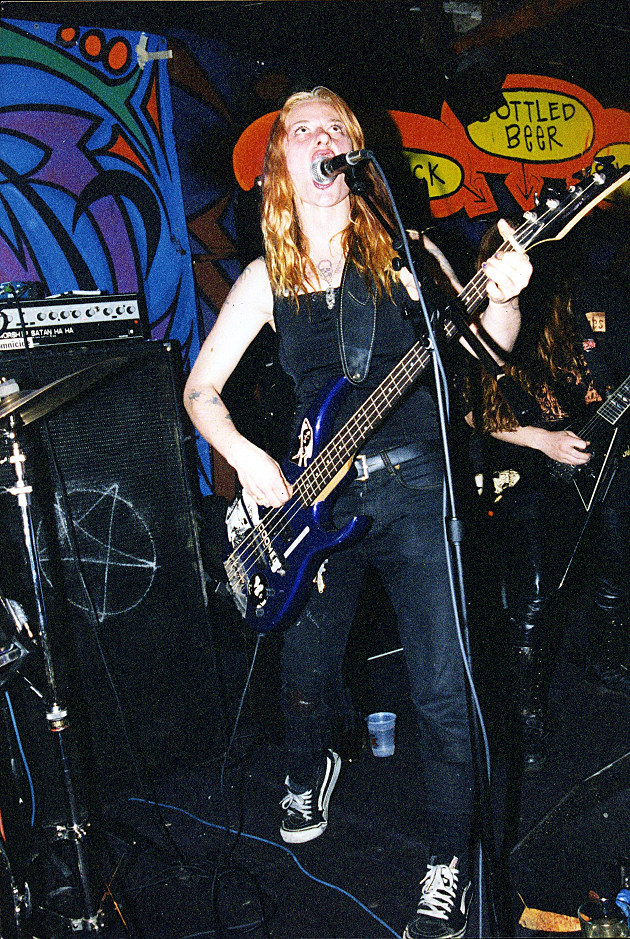
…
Nukaga had good reason to play in the Mission; at the time, new ground was being broken for metal in America in that neighborhood. Sarah Wiener and Casey Ward, two members of the more avant-garde side of the Mission scene, joined forces with guitarists John Gossard and Josh Smith, as well as drummer Sam Foster, to form a band that turned black metal on its head. Weakling, with Ward on keys and Weiner on bass, spent two years proving that heavy metal’s bleakest sub-genre could thrive outside of Norway. Though they only existed from 1997 to 1999, Weakling’s impact was immense, being felt all the way up the Pacific Northwest. Bands like Wolves in the Room visited the bay only a few short years later, proudly claiming Weakling as a major influence. Ward and Weiner, two musicians without any kind of background in metal before 1997, were a part of a musical wave that continues to this day with the likes of Deafheaven and Agalloch.
Noothgrush made an effort to centralize themselves in San Francisco all throughout the ‘90s. It was the only move that made sense at the time; the Bay Area’s metal scene was remained geographically divided all the way up to 1998. Located an hour away from San Francisco, the South Bay featured the likes of Exhumed, Noothgrush and Sleep, while Dystopia and Neurosis from the East Bay reigned over the crusty headbangers. Metal music was spread to the farthest corners of the Bay Area but the efforts of those such as Stoltz, Joseph and Nukaga showed that women were already making daring and bludgeoning contributions to the music world even during the scene’s infancy. The many women that played in the Mission had brought forth a new level of drive and creativity but there was still something missing.
…
Sangre Amado live in 1997, from the Kill That Cat Archives
…
Jesika Christ of Sangre Amado, a burgeoning death metal act, summoned that something through a virtuosity and technical ability that permanently upped the standard for female musicians wanting to play metal music in the bay. “I would actually learn the guitar riffs, because that was all I could really hear!” Christ recalls. “That’s what I would learn on my bass, and with Sangre Amado the bass was really up front. I wrote a lot of songs that were very guitar-like in the way I played the bass, a lot of chords and weird stuff.” At one point it was notable to simply be a female musician playing heavy music, but Christ and Sangre Amado had now raised the bar when it came to instrumental proficiency.
In the Mission, Erica Stoltz, Casey Weiner and Sarah Ward were among those fostering the propagation of strange and new sounds, metal or otherwise. Chiyo Nukaga and Lori Joseph persevered with their bands in an era when heavy music, let alone doom metal, barely had a pulse. Jesika Christ’s skill and ability was what bridged the gap—her technical excellence provided aural proof of what female metal musicians were capable of in the bay. As the ‘90s drew to a close, women were now held to a similar musical standard as men, and the female musicians that stepped up proved to be among the most talented in their field, gender be damned.
…
This post has been updated since its original version to more accurately represent names and dates. The year 1957 was changed to 1968. Also photo and video credits were updated.
In the second and final installment, to be published next week, years of unheralded skill, effort and tenacity finally pay off.
…







